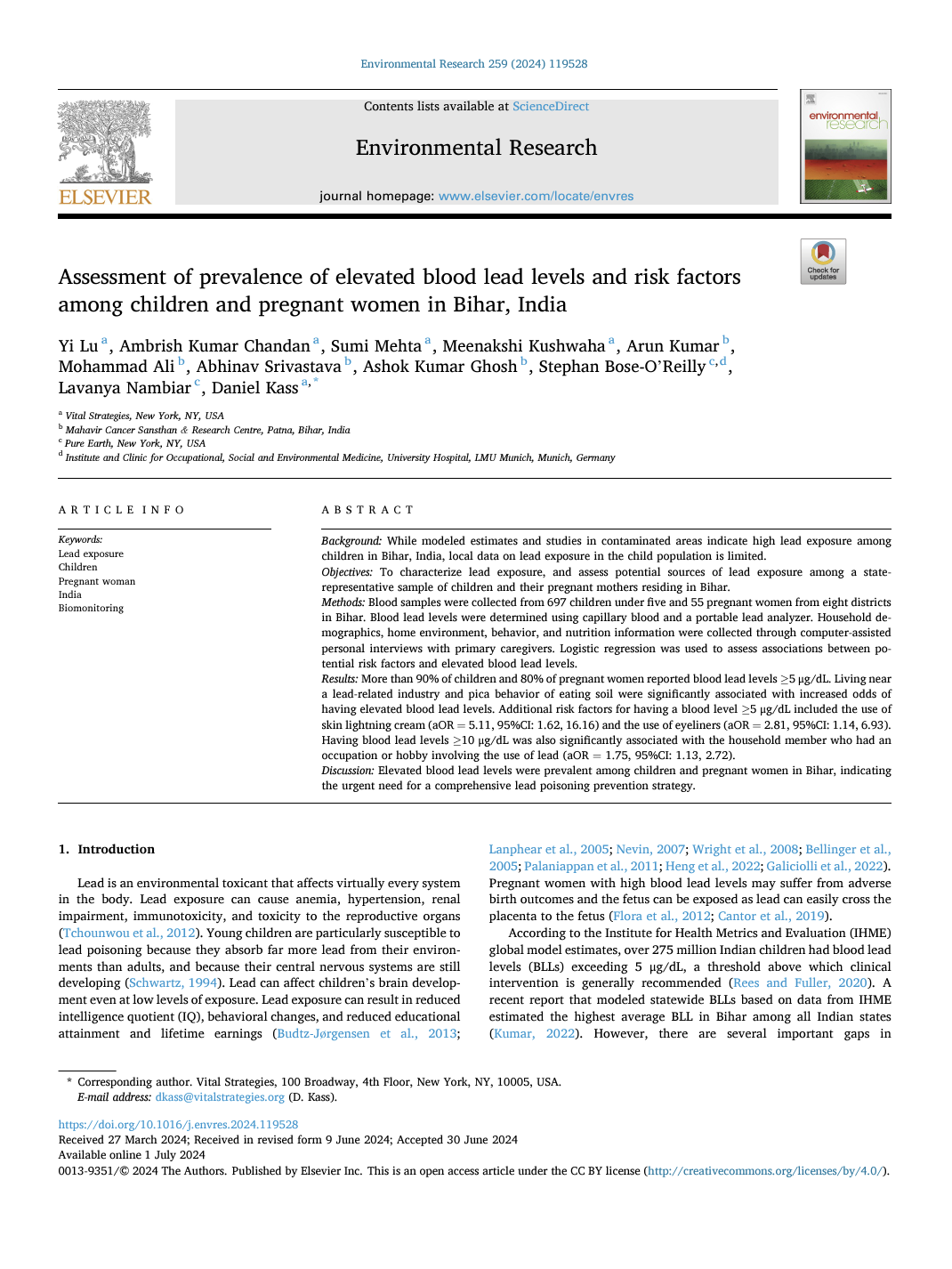While modeled estimates and studies in contaminated areas indicate high lead exposure among children in Bihar, India, local data on lead exposure in the child population is limited. This study aimed to characterize lead exposure and assess potential sources of lead exposure among a state-representative sample of children and their pregnant mothers residing in Bihar. Blood samples were collected from 697 children under five and 55 pregnant women from eight districts in Bihar. Household demographics, home environment, behavior, and nutrition information were collected through computer-assisted personal interviews with primary caregivers. Over 90% of children and 80% of pregnant mothers had elevated blood lead levels. Industrial activities, pica behavior of eating soil, and cosmetic use were potential sources of lead exposure. These high percentages of elevated blood lead levels indicate the urgent need for a comprehensive lead poisoning prevention strategy in Bihar.
Published July 9, 2024
Sign up to receive our monthly Research Roundup email, which offers a selection of new public health research from major journals.
Recent Abstracts
Trouble Brewing – The Case for Alcohol Policy (Second Edition)
Lessons from Vietnam’s Campaign for a Tax on Sugar-Sweetened Beverages
Principles of Alcohol Taxation
Clean Air in Jakarta: Gaps and Possibilities Toward Low Emission Practices
Public Attitudes Towards Alcohol Policy: South Africa
Quality Assurance and Improvement Framework for Medical Certification of Cause of Death and…
More Data Better Health: Climate and Health in the Legal Amazon
Mais Dados Mais Saúde: Clima e Saúde na Amazônia Legal
Health Taxes Action Guide
Opinión pública frente a la política de alcohol: Colombia
